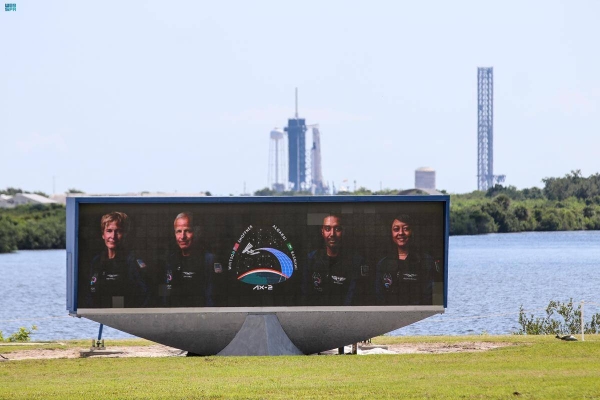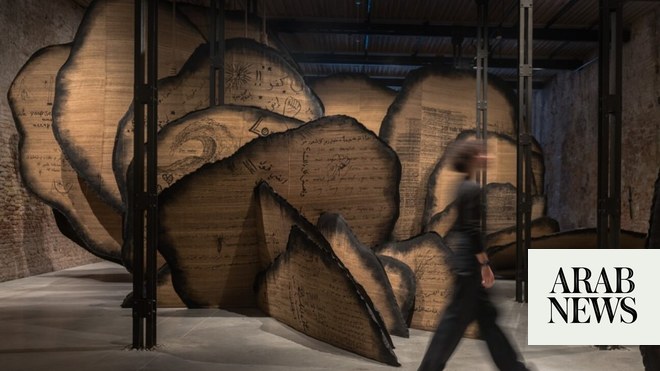
The first Arab and first Muslim in space, Prince Sultan bin Salman, said in 1985: “The Arab world is at a turning point. We have gone through the phases of oil, money and early technological development. The new generation is looking forward to joining the rest of the world by obtaining the most important things in that turnaround: Opportunity and education. They are the keys that open the door for our future.”
Those words were spoken after the Saudi prince — an air force fighter pilot at the time — blasted off from the Kennedy Space Center on board the Space Shuttle Discovery. He was on a seven-day mission that would, among other things, deploy a satellite for the Arab Satellite Communications Organization, commonly known as Arabsat. The prince became a hero not just in Saudi Arabia, but across the region. He traveled 4.67 million kilometers, and went where no Arab had ventured before.
“You realize how small you are, how we are just a speck in the universe,” Prince Sultan, a son of King Salman, told me in an interview in 2008.
This month, 33 years on from that space flight, similar words of hope and ambition are being spoken, this time in the UAE, where the country’s first two astronauts have been revealed. Hazza Al-Mansouri and Sultan Saif Al-Neyadi were selected from over 4,000 people who applied for the program. One of them will blast off next year aboard a Russian Soyuz rocket headed for the International Space Station. The other will serve as backup.
Of course, the sky, space and cosmos are nothing new to the Arab world. It was always only a matter of time before the region would again find its rightful place in the scientific pursuit of space studies and the exploration of our outer boundaries. Indeed, as a leading figure in the “space race” between Cold War rivals the US and the old Soviet Union predicted when I met him in 2006, the Arab world was primed to re-enter the arena. “They have the history, the talent and the money to do so,” said Russian cosmonaut Alexey Leonov, who in 1965 became the first man to perform a spacewalk.
UAE astronauts and Mars probe are helping the Arab world rediscover its thousand-year-old heritage and chart the ancient course set by our ancestors.
Rym Tina Ghazal
But, then again, the people of the Arab world have already “reached” the Moon, or at least have imprinted their influence on the lunar body. Some of the Moon’s craters are named after scholars from the Islamic world. In the same vein, our region has also “touched” Mars. On the Red Planet, an area of contrasting brightness and darkness — called an albedo feature — was named Arabia Terra after the Arabian Peninsula. It lies in a region called the Arabia quadrangle, one of the 30 that make up the surface of the planet.
Perhaps more importantly than extraterrestrial signposts, the Arab world’s engagement with space has everything to do with Prince Sultan’s prescient observation three decades ago. We have for decades been invested in space, this time literally. In 1997, the first satellite phone company in the Arab world, Thuraya, was founded in the UAE. Named after the Pleiades star cluster, also known as the Seven Sisters, Thuraya is an important star used in old Gulf calendars, known as Al-Drour. This star’s departure from the night sky around the last week of April traditionally heralds the start of the annual stormy season in the Arabian Peninsula.
In Saudi Arabia, the King Abdulaziz City for Science and Technology has been instrumental in designing and building 13 satellites so far. It is also responsible for establishing several research centers on space and aeronautics in collaboration with international partners. Arabsat, which was founded in 1976 by the 21 member states of the Arab League and whose first satellite Prince Sultan helped launch, operates from its headquarters in Riyadh.
The UAE, too, has been involved in building its own satellites, and has set up the region’s first space research center. It plans to launch a probe to Mars in 2020. And, when that spaceship, named Hope, sets off for the Red Planet, it will be supported by a contingent of engineers, scientists and mathematicians home-grown in the Arab world and who are adding to the legacy of Arab expertise in the study of the cosmos.
Space has opened up new opportunities in the knowledge economy for the Middle East, as the region rediscovers its thousand-year-old heritage. We are guided to the future by charting the ancient course set by our ancestors. We are back in space, grounded in our history.
Rym Tina Ghazal is an award-winning journalist. In 2003, she became one of the first women of Arab heritage to cover war zones in the Middle East. Copyright: Syndication Bureau. www.syndicationbureau.com











